Choosing a Handgun: Differences between Revolvers vs. Semi-Automatic Pistols
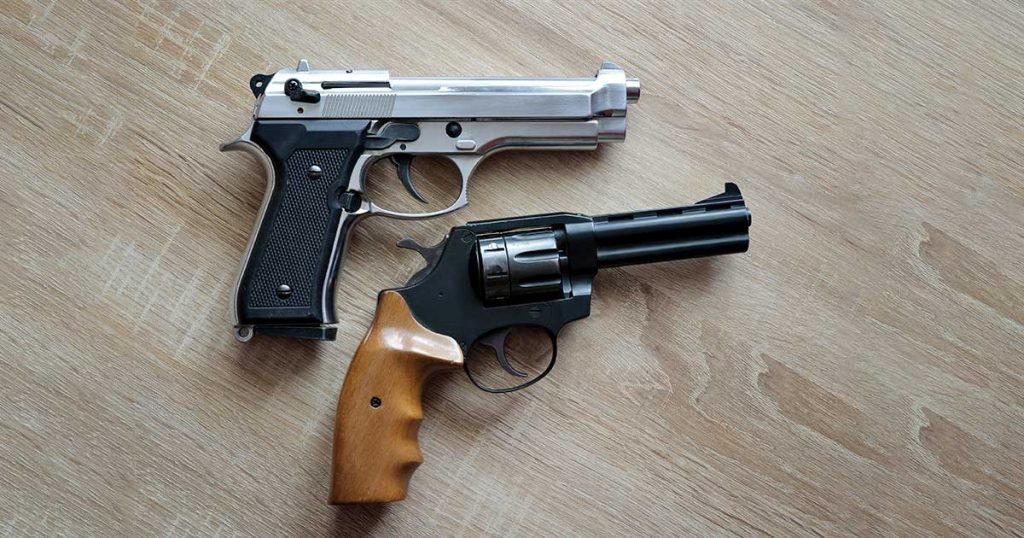
Differences between Revolvers vs. Semi-Automatic
Buying your first handgun can seem overwhelming because there is a dizzying array of choices. They include barrel size, frame size, materials and more. But hang tight. We’re assembling some articles to give you a bit of guidance to make things a lot easier. This is a high-level article, so we won’t get into tremendous detail or specify every niche. Instead, we’ll go to 30,000 or 40,000 feet for generalities.
For starters, handguns are pistols. They are guns you can shoot with one hand (or two) as opposed to rifles, carbines, etc., that one fires with both hands.
Handguns fall into two broad categories: revolvers and semi-automatics. Semi-automatics further divide into hammer-fired like the M1911 or striker-fired like the Glock 17. Let’s examine the pros and cons of all three.
REVOLVERS
Revolvers have roots in 16th Century Venice and China. In 1836, Samuel Colt, an American, patented the ancestor all today’s revolvers. His guns were very popular, and it’s not surprising that our view of the Wild West is wrapped around his firm’s Colt revolvers. In fact, his later Colt .45 has been in near continuous production since introduced in 1873 and has changed very little since then.
Revolvers use a cylinder with typically 5, 6 or 7 rounds. Usually the smaller the ammunition, the more rounds can fit into a cylinder, all else being equal. .22 is a relatively small round, and thus there are revolvers with 9 or even 10-round .22 cylinders.
Revolvers started out with wooden grips mated to metal frames, barrels and cylinders. These main metal components were typically blued or stainless steel. Modern revolvers use more modern steel alloys and often pair them with all kinds of improvements including modern fiber optic sights, ported barrels and rubber or polymer grips. But approaching 200 years after they were first invented, they are immediately identifiable as revolvers.
Revolvers can be single-action or double-action. A single-action gun has a hammer at the top back. You have to pull the hammer down with your thumb and then pulling the trigger to fire at your leisure. You’re spreading to work across to different parts of your hand, which makes it a bit less tiring. And since the trigger does only one thing (fires the gun), there is less effort involved, and thus less time to shake/move, which means all else being equal, greater accuracy than a double-action gun. In contrast, a double-action gun has no hammer. Pulling the trigger puts the hammer into firing position and then fires the bullet. It requires more trigger effort (trigger pull pressure) to operate a double-action gun than a single-action one, and thus these guns are often less accurate.
REVOLVER – ADVANTAGES
Advantages have several advantages and disadvantages. First, there is style. Nothing evokes the Wild West or certain other periods of time like a revolver. It seems like everyone knows what one is and that they operate by putting ammo into a cylinder. Revolvers rarely jam. And for life-or-death situations, that’s a good thing to have. Many police carry semi-automatics and rely on those first but also carry revolvers as backup.
REVOLVER – DISADVANTAGES
Revolvers have a finite amount of ammunition in them. As already mentioned, they’re typically going to have 5 to 7 rounds though some can go up as high as 10. It is possible to reload a revolver. Old school revolvers required unloading spent cases and (re)loading one round at a time via a side loading gate. This evolved to where you’d open the cylinder, push the extractor and dump out the empty spent cases all at once, then you’d load new ammo into the cylinder one at a time.
But now, moon clips make it easier to load an entire cylinder at once. Even then, it’s not the fastest process, and keeping moon clips pre-loaded with ammo isn’t necessarily something that’s easy to carry around.
The moon clips are about the same dimension as the cylinder. They carry the same number of rounds and have the same pattern as the cylinder. And you can just shove the ammo with the moon clip still attached into the back of the cylinder after the prior set of ammo has been extracted.
A speedloader is similar to the moonclip, but it is bigger and has a large knobby projection at back. Load the backs of rounds into the speed loader, which holds them in place until you need them. When your revolver is ready for reloading, open the cylinder, extract empty cases, align the speedloader’s ammo, twist or push the knob at the back and the ammo drops into the cylinder. Unlike the moonclip, the larger and bulkier speedloader does not go in the cylinder with the ammo. The empty speedloader can now be reloaded when you have time.
Speed strips are similar to moon clips except they create a flat stack of ammo that you can then load fairly quickly, about two rounds a time.
Whether using moonclips, speedloaders or speed strips, the ammo’s front tips are exposed and thus can snag.
Note: revolvers generally don’t jam, but sometimes spent cases get stuck and don’t want to come out. This can also slow down reloading. There is one more thing. Compared to semi-automatics, revolvers are typically thicker across because of their cylinders, and their grip handles arch back and protrude more.
REVOLVERS – CONCLUSION
Revolvers come in many sizes, but generally one broad shape. Generally larger revolvers permit larger barrels and more powerful ammo such as .45 ACP, .40 S&W, .357 Magnum or .44 Magnum. The Taurus Judge can even fire .410 shotgun shells! Other names well-known for producing big revolvers include Ruger, Magnum Research, Smith & Wesson, and, of course, Colt.
The largest revolvers are often used for shooting exhibitions, target competitions or even hunting large animals. Moreover, large frames coupled to long barrels allow a long sight radius, and thus more accurate sighting.
Obviously, smaller revolvers are easier to carry around. Some are even carried as conceal carry self-defense firearms in one’s pocket. They can even be hammerless and equipped with low-profile front-sights to ensure they are snag free.
Differences between Revolvers vs. Semi-Automatic continues below.
GunBroker.com Product Spotlight Videos
SEMI-AUTOMATICS
M1911 TYPES
Semi-automatics are typified by the M1911 or Glock 17. These use a magazine with typically 5 to 19 rounds (or even up to 30 with longer tall box magazines that jut far out of the magazine well) that one loads into the pistol grip. With semi-automatics, you can also load an extra round into the chamber. Whether you’ve got a revolver or a semi-automatic, each pull of the trigger fires one round. Fully automatic guns are outside the purview of this article, but with them, pulling the trigger once fires multiple-rounds until ammo runs out or one lets go the trigger.
Semi-automatic handguns are designed around either single-stack or double-stack magazines that fit up in the pistol grip. A single-stack magazine means the ammunition is in a single vertical column. A double-stack magazine has rounds that are in two side-by-side (or sometimes offset) columns, and thus is wider than a single-stack magazine. As these magazines go in the grip and the grip is made as thin as reasonably possible, guns with double-stack magazines are wider around the grip than single-stack guns. This is a consideration for with medium and small hands.
The single-action Colt M1911 wasn’t the first semi-automatic, but this gun, that became standard issue to the US military in 1911, hence the name, was the benchmark for decades. The hammer-action .45 ACP handgun used single-stack 7-round magazines and had superb ergonomics for its day. It was thin, tall, and made a great sidearm. Behind the trigger was a convenient magazine release that was easy to operate. The magazines themselves were fully contained and snag-free. You could carry around an extra one or two or many. Swapping the mags was much faster than reloading ammunition into a revolver.
The gun used its own gases to recycle. Thus, firing the gun automatically put the next round in place. The result was lower trigger pulls than comparable firepower revolvers.
The M1911s were essentially of all steel construction except their wooden grips. This gun has proven massively popular. It has been made not only by Colt but by an endless number of other manufacturers. Moreover, these manufacturers and countless others have developed a stunning array of accessories including Tritium sights, lasers, grips, and more. So, you can customize an M1911-type gun in so many ways.
STRIKER-FIRED
Semi-Automatics have further evolved into striker-fired guns like the Glock 17. This gun was the seventeenth patent of the Glock company, hence the name. The gun took many of the ideas of the M1911 such as its broad outline, but then further modernized it to a clean-slate design.
The gun’s frame was polymer, cutting down on weight, and the gun’s grip architecture was double-stack, permitting much higher capacities than in the M1911 or revolvers. The standard was a 17-round magazine!
Glock made their gun striker-fired instead of hammer-fired, thus getting rid of the hammer protuberance in back. There are so many striker-fired choices other than Glock. Since they don’t have to adhere to the M1911’s classic looks, they often have more rounded forms that make them easier to conceal and potentially easier to holster/unholster without snagging. Striker-fired handguns are less complicated inside. They have fewer parts, and thus they can be more reliable. M1911s and striker-fired guns often differ on types of safeties. M1911s usually have active safeties such as a thumb safety on one side or an ambidextrous one on both sides. Striker-fired pistols sometimes have thumb safeties, but often rely on more passive safeties such as trigger safeties, etc.
SEMI-AUTOMATICS CONCLUSION
Semi-automatics fall into two broad categories: M911-types and striker-fired types like the Glock 17. The classic M1911 has roots predating World War I. These remain popular due to their style, relatively slim profile designed around single-stack magazines and more. And while the first M1911s came out over a century ago, newer and better M1911-type semi-automatic pistols are a staple in seemingly every arms maker’s catalog.
The striker-fired semi-automatics are generally lighter, higher capacity and less expensive than the M1911s. Their magazines are typically 5 to 19 rounds but can even be up to 30-rounds. Unlike revolvers, semi-automatics permit loading an extra round into the chamber. Lacking cylinders, they are usually thinner than revolvers. And their box magazines make reloading faster and more convenient than doing the same for a revolver.
Thanks for reading our Choosing a Handgun: Differences between Revolvers vs. Semi-Automatic Pistols! Keep in mind, we have plenty of other resources and products available at GunBroker.com, including information for new buyers and sellers. Stop by our site to learn more and find the right deal for you!


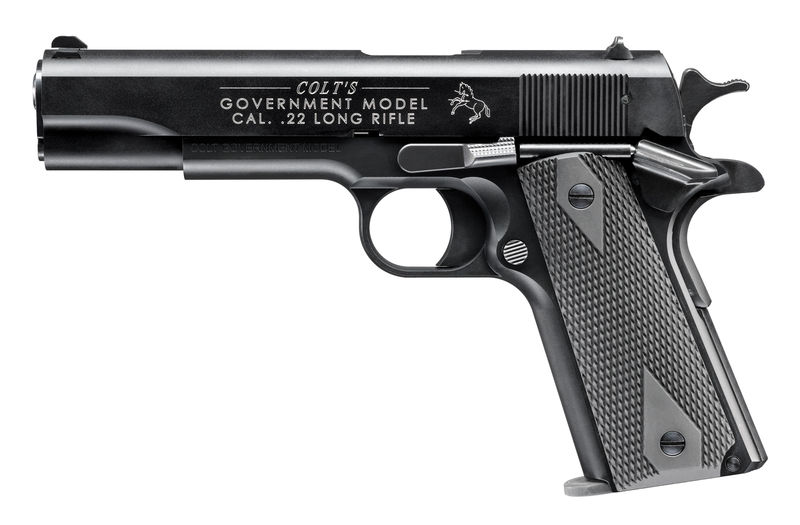
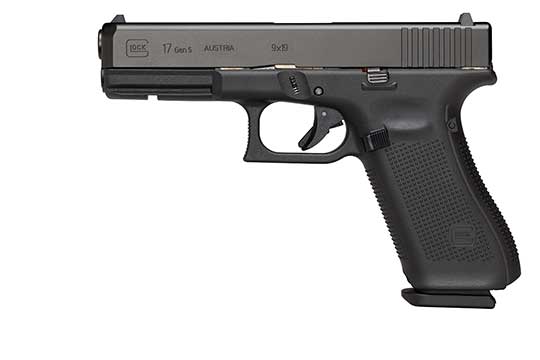

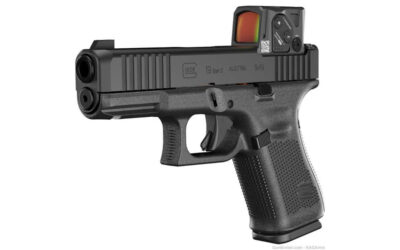
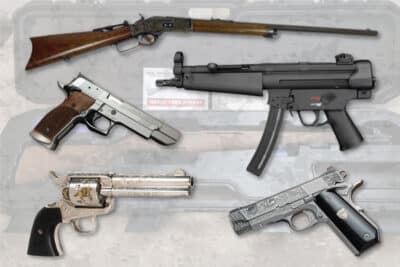
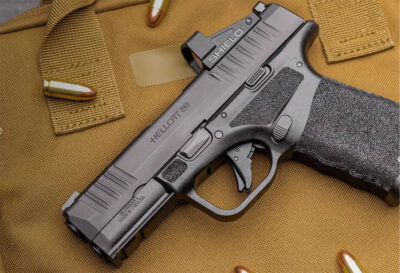
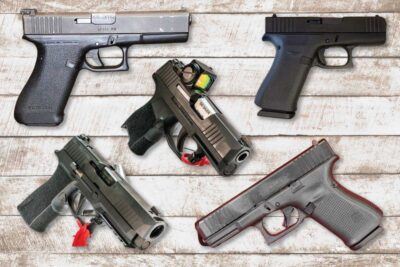
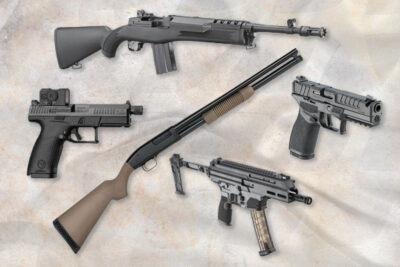

![New for 2025: EAA Witness2311 Match and Witness2311 Match X Double Stack [Video]](https://qacontent.gunbroker.com/wp-content/uploads/2025/02/EAA-Witness2311_Match-doublestack1911_2-1-400x267.jpg)
![At The Ready Custom Pistol Mounts: What You Need to Know [Video]](https://qacontent.gunbroker.com/wp-content/uploads/2025/03/At_The_Ready_Mounts-featured-400x267.jpg)
![3 Must-Have Altamont Engraved 1911s [VIDEO]](https://qacontent.gunbroker.com/wp-content/uploads/2025/01/Altamont_Master_Scroll_Rampant_Colt1911-400x267.jpg)
![Alchemy Custom Weaponry Double Stack 1911s [Video]](https://qacontent.gunbroker.com/wp-content/uploads/2025/01/ALCHEMY_CUSTOM_double_stack_1911-400x267.jpg)
![New Desert Tech Quattro-15 Rifle & Quattro-15 Pistol in 5.56NATO/223Rem [Video]](https://qacontent.gunbroker.com/wp-content/uploads/2025/02/DesertTech_quattro-15_pistol-new-for-2025-400x267.jpg)